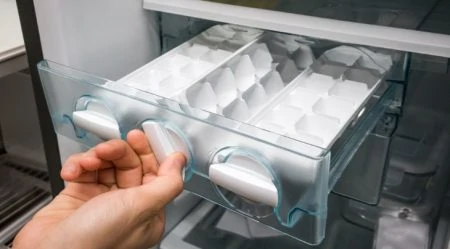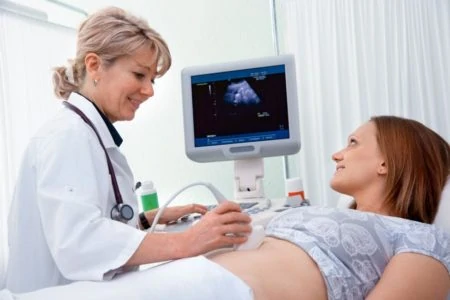The “two-week wait” can feel like an eternity. Every twinge in your stomach makes you wonder: Is this the start of a pregnancy, or is my period just around the corner?
Implantation cramps are a healthy, normal part of early pregnancy, but they can be tricky to identify.
In this guide, we will break down exactly what implantation feels like, how it differs from PMS, and when you can finally take a test to be sure.
Key Takeaways
- Implantation cramps occur when a fertilized egg burrows into the uterine lining, typically 6 to 10 days after ovulation.
- The sensation is usually mild, feeling like light prickling, tugging, or pulling rather than heavy throbbing.
- These cramps are short-lived, lasting anywhere from a few hours up to three days.
- Light spotting (pink or brown) is normal, but bright red blood or clots usually indicate a period.
What Are Implantation Cramps?
For many women, implantation cramps are the very first hint that conception was successful.
Here is the quick biology breakdown: once sperm fertilizes an egg in the fallopian tubes, cells begin to divide rapidly. This fertilized egg travels down toward the uterus, transforming into a blastocyst.
Once it reaches the uterus, it needs a place to stay. It burrows into the nutrient-rich uterine lining to set up camp for the next nine months. This process is called implantation.
As the egg attaches to the uterine wall, it can cause mild cramping. It is often accompanied by implantation bleeding or light spotting (1).
Take Note
When Do Implantation Cramps Happen?
Timing is everything when you are analyzing your symptoms.
Implantation generally occurs between 6 and 12 days post-ovulation (DPO), with 8 to 9 days being the most common window (2).
Duration
Implantation Cramps vs. Period Cramps
Because implantation happens right around the time you expect your period, distinguishing between the two is frustrating. However, your body often gives subtle clues if you know what to look for.
Here is how to spot the difference:
- Check the intensity: Period cramps are often heavy, dull, and throbbing. Implantation cramps are much lighter. They are often described as a prickling, tingling, or light pulling sensation.
- Watch the clock: Implantation pain is intermittent and short-lived (1 to 3 days). If your cramps persist for several days and get more intense, it is likely PMS.
- Inspect the bleeding: Implantation spotting is usually pink or light brown and very scant. If you see bright red blood, fill a pad, or pass clots, that is your period starting.
Since early pregnancy and PMS share so many symptoms, look for these specific pregnancy indicators that are less common with a period:
- Frequent need to pee.
- Dizziness or feeling lightheaded.
- Nausea (morning sickness).
- Sudden aversion to favorite foods or smells.
- A metallic taste in your mouth.
On the flip side, if you have significant lower back pain before the bleeding starts, that is a classic PMS sign.
If experiencing depression, you should see a healthcare provider to see if you are suffering from clinical depression or a serious, recurrent condition known as Premenstrual Dysphoric Disorder (PMDD).
Editor's Note:
Caitlin Goodwin, MSN, RN, CNMThe best way to know for sure is to track your cycle. If your cramps start a few days earlier than your usual PMS symptoms, it might be a baby on board.
If you are unsure, take a home pregnancy test. While some sensitive tests claim to work five days before your missed period, you will get the most accurate result if you wait until the first day of your missed period.
Remember that a positive pregnancy test will only happen after implantation occurs because the early developing placenta must be in place in order to produce pregnancy hormones. The test won’t be positive until several days after implantation or the bleeding has occurred.
Editor's Note:
Caitlin Goodwin, MSN, RN, CNMHow To Soothe The Pain
Implantation cramps are usually mild enough that you won’t need painkillers. However, if you are feeling uncomfortable, a little self-care goes a long way.
- Kick your feet up: Stress can make physical tension worse. Lie down, prop your feet up, and rest for a bit.
- Take a warm soak: A warm bath relaxes the uterine muscles and eases cramps. Just ensure the water isn’t scalding hot, as raising your core body temperature too high isn’t recommended in early pregnancy.
- Use a warm compress: If you don’t have time for a bath, a heating pad on a low setting or a warm towel on your lower belly works wonders.
- Stay hydrated: dehydration can trigger muscle cramping. Drink plenty of water throughout the day (source).
- Gentle movement: Sometimes simply changing positions or doing light prenatal yoga can stretch the muscles and relieve the tugging sensation.
When To Call A Doctor
While mild cramping is normal, severe pain is not.
Warning
It might just be gas or uterine stretching, but severe pain can indicate complications such as:
- Ectopic Pregnancy: This occurs when the egg implants outside the uterus, usually in the fallopian tube. It is a medical emergency. Symptoms include sharp pain on one side, shoulder pain, or dizziness (4).
- Miscarriage: Heavy cramping combined with bleeding can be a sign of pregnancy loss.
- Ovarian Cysts: Sometimes a cyst can rupture or twist, causing sudden pain.
Other Common Pregnancy Cramps
Fact
If you are pregnant, you will likely feel various aches and pains as your body changes.
In the second trimester, you might feel a sharp jab in your lower belly when you stand up quickly or sneeze. This is called round ligament pain. It happens because the ligaments supporting your heavy uterus are stretching out like rubber bands.
Other common culprits for cramping include gas, constipation, and even sexual intercourse (5).
FAQs
The Bottom Line
Implantation cramps can be an exciting first sign that you are pregnant, usually showing up 6 to 12 days after ovulation.
Remember that these cramps differ from your period; they are milder, shorter, and feel more like a prickle than a throb. They might come with a bit of pink or brown spotting, but never heavy red flow.
If you are feeling these symptoms, try to relax and stay hydrated. The best thing you can do is wait a few more days and take a pregnancy test for a definitive answer. Good luck!











